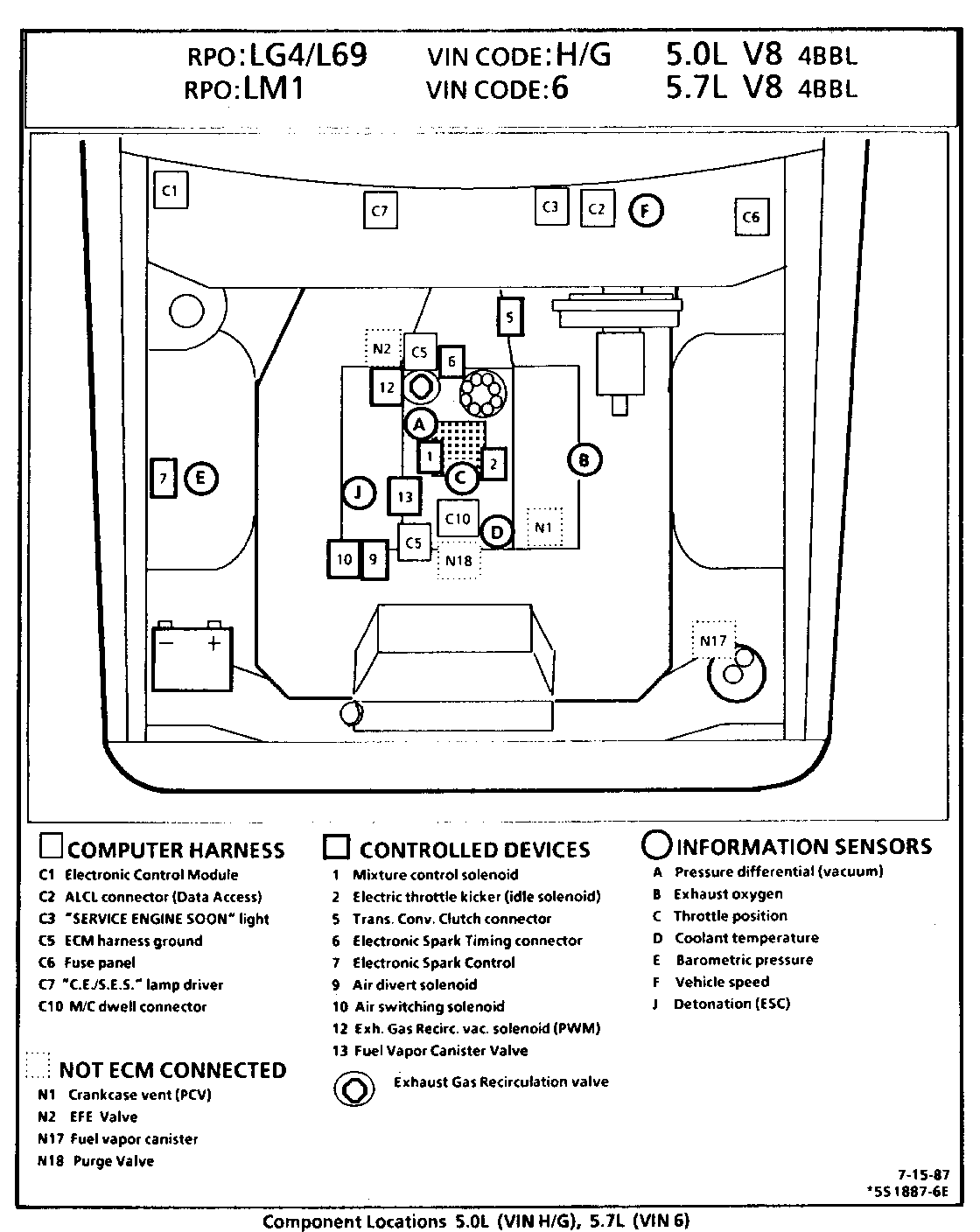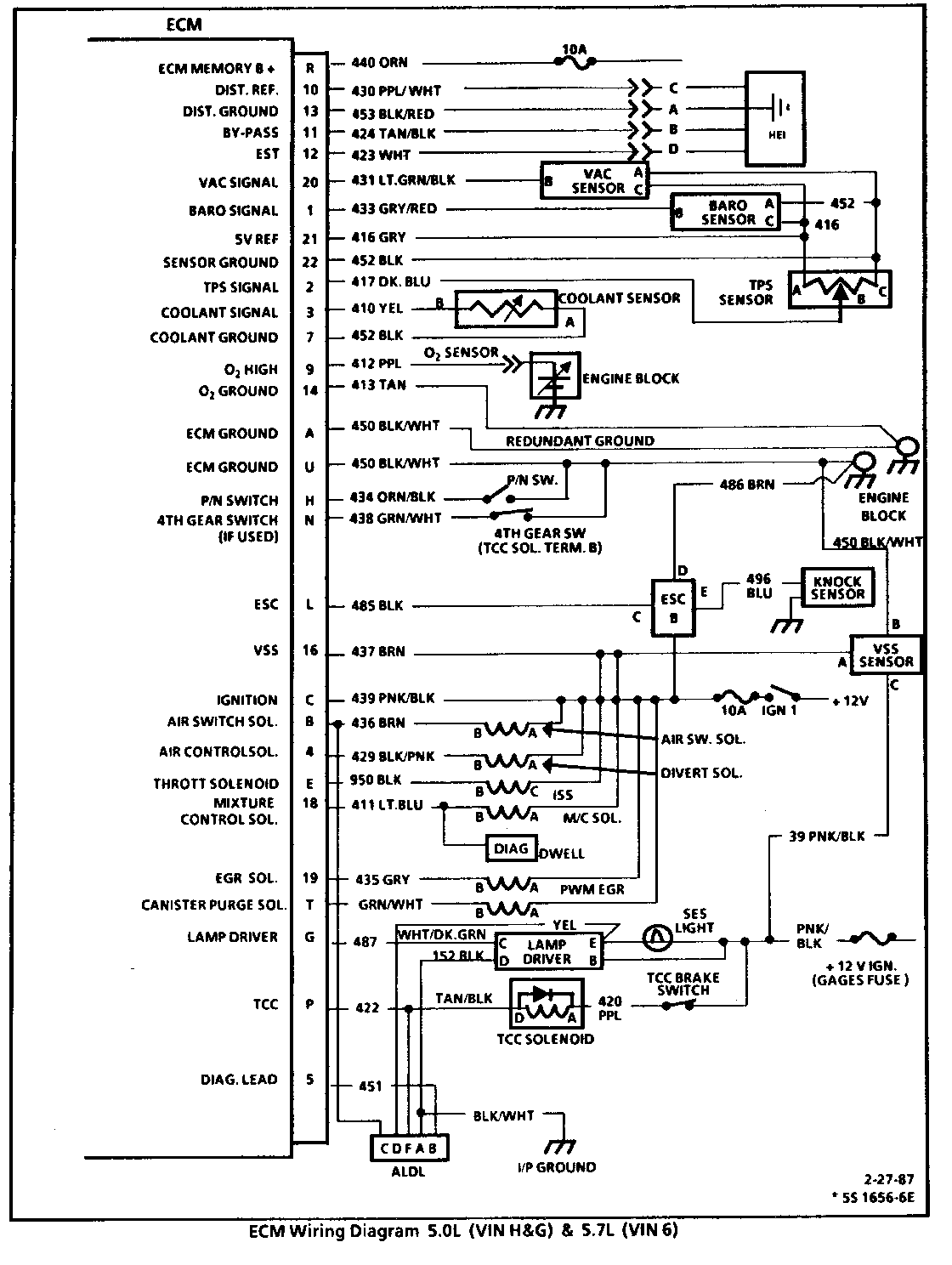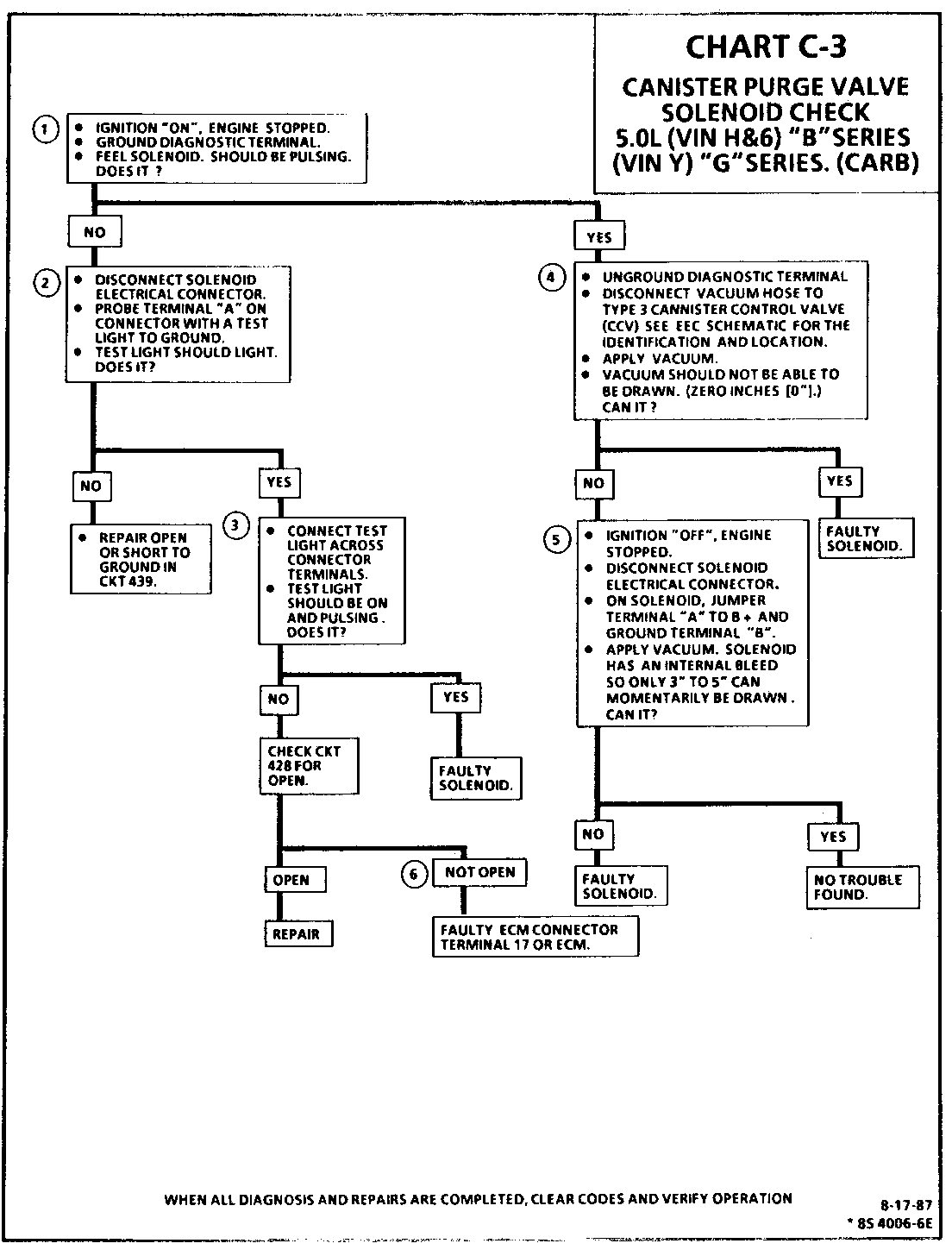ECM CONTROLLED CANISTER PURGE REVISION INFORMATION

SERVICE MANUAL REVISION - ECM CONTROLLED CANISTER PURGE CIRCUIT DIAGNOSIS-SECTION 6El
VEHICLES AFFECTED: 1987 G AND F CARLINES EQUIPPED WITH A 5.OL LG4 ----------------- (VIN H), 5.OL L69 (VIN G) OR 5.7L LM1 (VIN 6) CARBURETED ENGINE
The 1987 subject carbureted engines are equipped with an ECM controlled solenoid that allows vacuum to purge the canister when energized.
Use the information provided with this bulletin for any necessary service needed to functionally check the canister purge system.
CHART C-3
CANISTER PURGE SOLENOID CHECK 5.OL (CARB)
Circuit Description:
Canister purge is controlled by a solenoid that allows manifold vacuum to purge the canister when energized. The ECM supplies a ground that is pulse width modulated (turned "ON" and "OFF" several times a second). The duty cycle (pulse width) is determined by the map sensor input. (Engine Vacuum) The duty cycle is calculated by the ECM when the following conditions have been met: o Engine run time less than specined. o Coolant temperature below a given value. o Vehicle speed below a given value. o TPS below a given value.
Test Description:
Numbers below refer to circled numbers on the diagnostic chart.
1. The solenoid should be pulsing as grounding the diagnostic terminal turns "ON" the solenoid. 2. Test light should light if CKT 439 is not open as the test Iight provides a ground for current flow. 3. Test light is being substituted for solenoid to check if E CM and CKT 428 are OK. 4. The solenoid is normally open, so vacuum should not be able to be drawn. (Zero inches [0"].) Applying 12 volts prevents solenoid from pulsing, allowing some vacuum build-up before bleeding "OFF" internally 3"to 5".
5. Applying 12 volts prevents solenoid from pulsing, allowing some vacuum build-up before bleeding "OFF" internally 3" to 5".
6. The ECM is equipped with a fault protected quad-driver for the canister solenoid so if CKT 428 is not open, the quad-driver is faulty within the ECM or the connector terminal is faulty. The solenoid coil must measure more than 20 ohms. Less resistance will cause the CCP driver to open repeatedly.





General Motors bulletins are intended for use by professional technicians, not a "do-it-yourselfer". They are written to inform those technicians of conditions that may occur on some vehicles, or to provide information that could assist in the proper service of a vehicle. Properly trained technicians have the equipment, tools, safety instructions and know-how to do a job properly and safely. If a condition is described, do not assume that the bulletin applies to your vehicle, or that your vehicle will have that condition. See a General Motors dealer servicing your brand of General Motors vehicle for information on whether your vehicle may benefit from the information.
